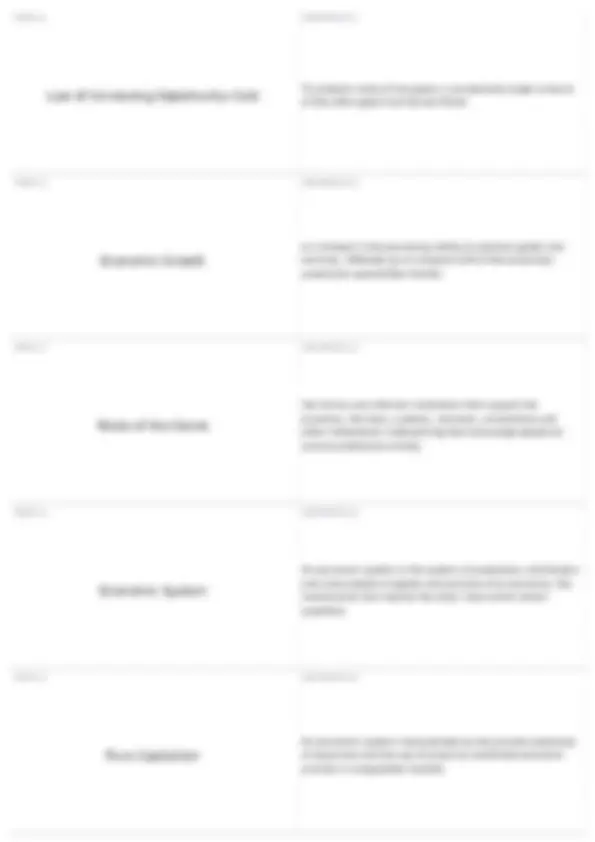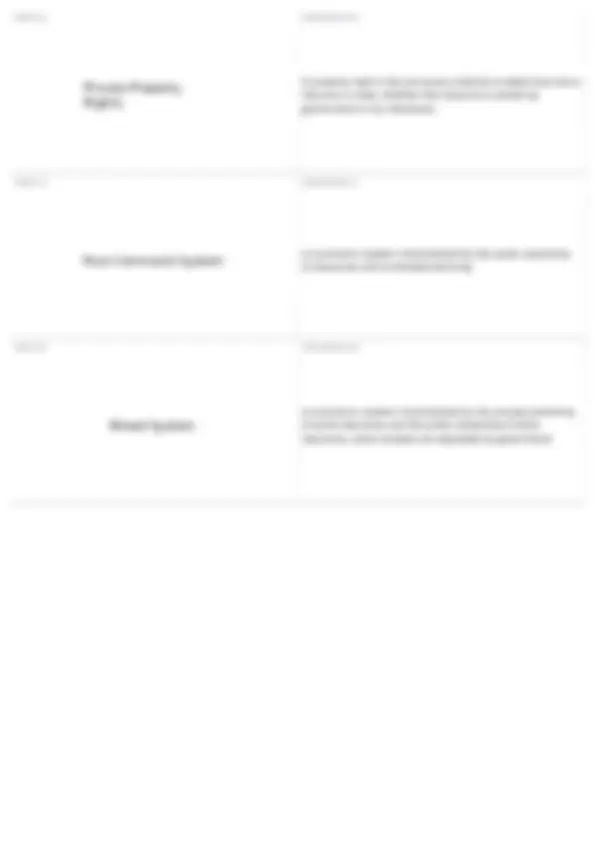




Study with the several resources on Docsity

Earn points by helping other students or get them with a premium plan


Prepare for your exams
Study with the several resources on Docsity

Earn points to download
Earn points by helping other students or get them with a premium plan
Community
Ask the community for help and clear up your study doubts
Discover the best universities in your country according to Docsity users
Free resources
Download our free guides on studying techniques, anxiety management strategies, and thesis advice from Docsity tutors
Class: ECON - Econometrics 1 - Introduction; Subject: Economics; University: Washington & Jefferson College; Term: Forever 1989;
Typology: Quizzes
1 / 4

This page cannot be seen from the preview
Don't miss anything!



the value of the best alternative forgone when an item or activity is chosen TERM 2
DEFINITION 2 In economics and business decision-making, sunk costs are retrospective (past) costs that have already been incurred and cannot be recovered. TERM 3
DEFINITION 3 In economics, the law of comparative advantage is the idea that a nation is better off when it produces goods and services for which it has a comparative advantage. The individual with the lowest opportunity cost of producing a particular good should specialize in that good TERM 4
DEFINITION 4 In economics, principle of absolute advantage refers to the ability of a party (an individual, or firm, or country) to produce more of a good or service than competitors, using the same amount of resources. TERM 5
DEFINITION 5 In economics, the law of comparative advantage refers to the ability of a party (an individual, a firm, or a country) to produce a particular good or service at a lower opportunity cost than another party.
Barter is a method of exchange by which goods or services are directly exchanged for other goods or services without using a medium of exchange, such as money. TERM 7
DEFINITION 7 Breaking down the production of a good into separate tasks TERM 8
DEFINITION 8 focusing work effort on a particular product or a single task TERM 9
DEFINITION 9 a curve showing alternative combinations of goods that can be produced when available resources are used efficiently; a boundary line between inefficient and unattainable combinations TERM 10
DEFINITION 10 A condition that exists when there is no way resources can be reallocated to increase the production of one good without decreasing the production of another, getting the most from available resources
A property right is the exclusive authority to determine how a resource is used, whether that resource is owned by government or by individuals. TERM 17
DEFINITION 17 an economic system characterized by the public ownership of resources and centralized planning TERM 18
DEFINITION 18 an economic system characterized by the private ownership of some resources and the public ownership of other resources, some markets are regulated by government